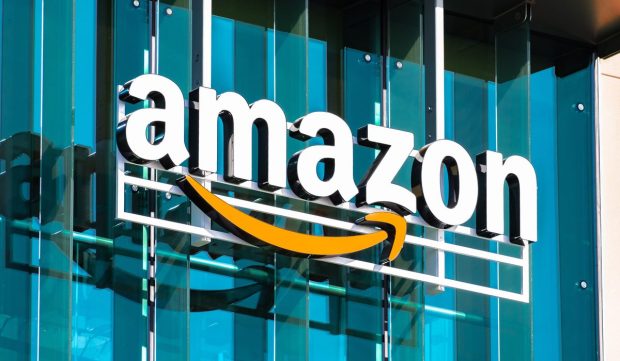Amazon Touts Center-Aisle Grocery Selection 99X Larger Than Average Supermarket

Amazon is leveraging its extensive eCommerce marketplace to eat away at grocers’ center-aisle sales.
The eCommerce giant’s annual report highlights the opportunity that the $800 billion U.S. grocery market poses, drawing visits three to four times a week per household on average.
“Amazon has built a somewhat unusual, but significant grocery business over nearly 20 years,” Amazon President and CEO Andy Jassy wrote in a letter to shareholders. “Similar to how other mass merchants entered the grocery space in the 1980s, we began by adding products typically found in supermarket aisles that don’t require temperature control such as paper products, canned and boxed food, candy and snacks, pet care, health and personal care, and beauty.”
He noted that the company’s assortment in these categories of 3 million items eclipsed the “typical supermarket’s” 30,000-product selection in the same areas, adding that the eCommerce giant has driven up the unit economics of delivering these products by focusing on offering “larger pack sizes” to account for the high cost of fulfillment.
Indeed, Amazon has been gaining share in center-aisle categories not only because of its extensive assortment but also the discounts it offers via its Subscribe & Save program. Research from the November edition of the Subscription Commerce Conversion Index study, “The Subscription Commerce Conversion Index: Subscribers Seek Affordability and Convenience,” a PYMNTS and sticky.io collaboration, found that 42% of consumers with product subscriptions participate in the program.
In a feature last fall, PYMNTS’ Karen Webster discussed the popularity of the program and the threat it poses to grocers.
“Subscription services such as Amazon Subscribe & Save … are whittling away the center-aisle purchases from grocery stores — of course, at different paces with different merchants in different countries — and will for some time,” Webster wrote.
Notably, however, Amazon continues to lag far behind competitor Walmart in terms of grocery market share. PYMNTS research found that, at the close of last year, the latter held a 17.8% share of food and beverage sales, while the former held 2.6%, although Amazon’s share has been slowly growing over the last few years, while Walmart’s has continued to hover around 18%.
To drive up this share, the eCommerce giant is turning its focus to brick-and-mortar.
“While we’re pleased with the size and growth of our grocery business, we aspire to serve more of our customers’ grocery needs than we do today,” Jassy said in the letter. “To do so, we need a broader physical store footprint, given that most of the grocery shopping still happens in physical venues.”
He noted that the company’s Whole Foods Market specialty grocery brand has been growing and that Amazon is adjusting the model to increase its profitability. However, to grow the company’s share of brick-and-mortar grocery sales, Amazon also needs a lower-tier option that fits within more consumers’ budgets.
Jassy hinted that the company’s existing efforts in this space with its Amazon Fresh format may be a failed experiment and that the firm may be exploring new formats to replace it, although Jassy did not specify what it is about Fresh’s approach that the company would like to change going forward.
“[T]o have a larger impact on physical grocery, we must find a mass grocery format that we believe is worth expanding broadly,” Jassy said in the letter. “Amazon Fresh is the brand we’ve been experimenting with for a few years, and we’re working hard to identify and build the right mass grocery format for Amazon scale.”
